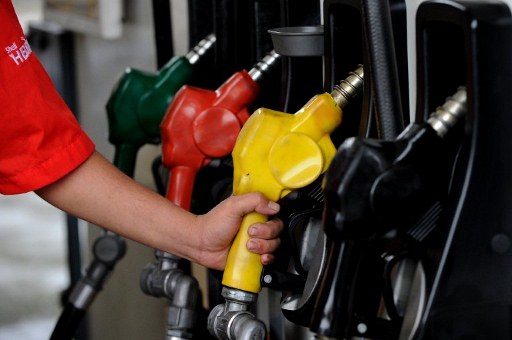Big fuel price rollback next week, if trend holds

FILE PHOTO
MANILA, Philippines — A big rollback in local pump prices is projected to provide temporary relief to Filipino consumers next week —if the downward movement in oil prices is sustained until today.
Fernando Martinez, chair of the Independent Philippine Petroleum Companies Association and of Eastern Petroleum Corp., said in an interview with the Inquirer on Thursday that there could be a price reduction of as much as P12 a liter for diesel next week.
He noted, however, that this could easily be reversed by developments in the ongoing conflict between Russia and Ukraine given the volatility of the global oil market.
“The computation as of yesterday is that [the rollback] could be P12 [a liter] for diesel. If the movement of (oil) prices would be the same as the first three days of this week, more or less it can be P12,” he said.
In an interview with radio station dzBB, Martinez said that as of Wednesday this week, the rollback was P2 to P3 a liter, which he noted could change by Friday.
Article continues after this advertisementLocal prices at the pump range from P70 to P80 a liter, depending on the grade. Since January, prices of gasoline and diesel have already increased by P20.35 and P30.65, respectively.
Article continues after this advertisementREAD: Oil firms set biggest increase in fuel prices
Local fuel prices move on a weekly basis and use as benchmark the Mean of Platts Singapore (MOPS), which is the daily average of all trading transactions between buyers and sellers of refined petroleum products as summarized by Standard and Poor’s Platts, a Singapore-based market wire service.
The Philippine oil industry has stopped benchmarking local pump prices on crude since the remaining local refineries have capacities that are lower than national oil demand. The industry imports finished products amounting to more than half of the national requirement.
Analysts usually release projections of fuel price movements on Friday or during the weekend to cover the entire weekly trading.
Based on industry calculations, every dollar reduction in oil prices will result in a decrease of between P0.27 and P0.30 a liter. Another factor affecting pump prices is the peso-dollar exchange rate and industry estimates show that for every P1 change in the rate, local pump prices can decline by P0.13 to P0.15 a liter.
Slowing global demand
Martinez said oil companies might announce the rollback earlier than expected to improve their stock price in the market, adding that some companies were already implementing discount promotions as well.
The Department of Energy’s Oil Industry Management Bureau (OIMB) cited the COVID-19 surge in China and Ukraine’s drifting away from its plan to be a member of the North Atlantic Treaty Organization, which will hopefully appease Russia, as having caused the dip in oil prices in the world market.
Many Western analysts said the brightening prospect of a diplomatic solution to Russia’s military invasion of Ukraine would help ease the world’s energy supply shock.
OIMB Director Rino Abad told CNN Philippines that while the department could not yet give exact figures on the possible price rollback next week, he said recent trading trends would practically wipe out last Tuesday’s huge jump in pump prices.
Energy Secretary Alfonso Cusi on Wednesday said that if the current trading trend is sustained, local prices could drop next week by at least P12 a liter for diesel and P5 for gasoline.
Still, the possibility of local pump prices going back to the level before the Russia-Ukraine conflict may not happen anytime soon.
As of Thursday, the price of the Asian benchmark Dubai crude was $105.76 a barrel, still above $92.07 before Russia started its invasion of neighboring Ukraine.
Since the conflict, the highest spike recorded was on March 2 when Dubai crude hit $106.58 a barrel from $92.34 after the United States announced sanctions on Russia.
Globally, oil prices fell for a fifth day on Thursday after official data showed a sustained rise in crude and fuel inventories in the United States, the world’s biggest consumer of petroleum products.
On the demand side, many European economies, including Germany, France, and Italy, are expected to slow down their consumption of fuel as the rising COVID-19 cases trigger lockdowns and tougher travel restrictions.
The aggressive policy response of Beijing to contain China’s new spike in COVID-19 cases has already raised the prospect of a much weaker demand for oil from the world’s second-biggest economy. China has imposed lockdown restrictions on key manufacturing regions and millions of people to address the surge in coronavirus infections.
RELATED STORIES
Government cool to fare hike as fuel prices shoot up
Oil price tsunami: Drowning the poor in tougher times